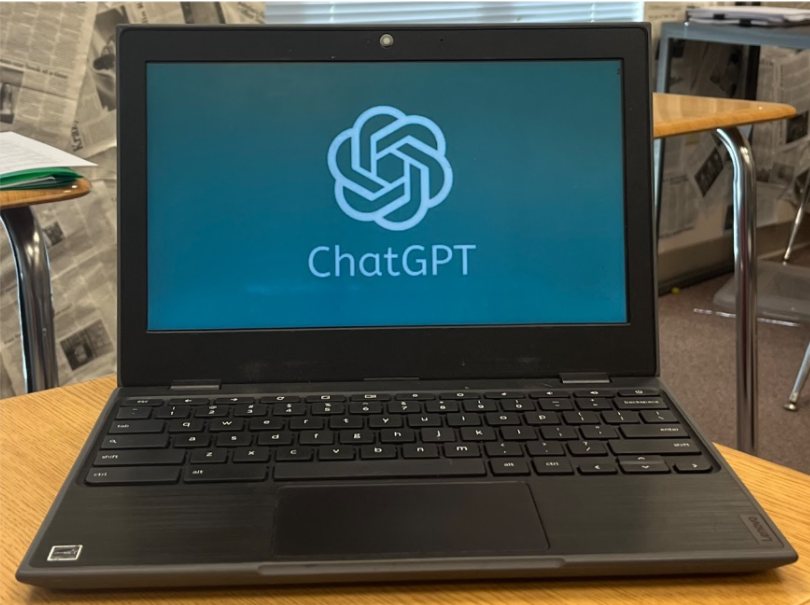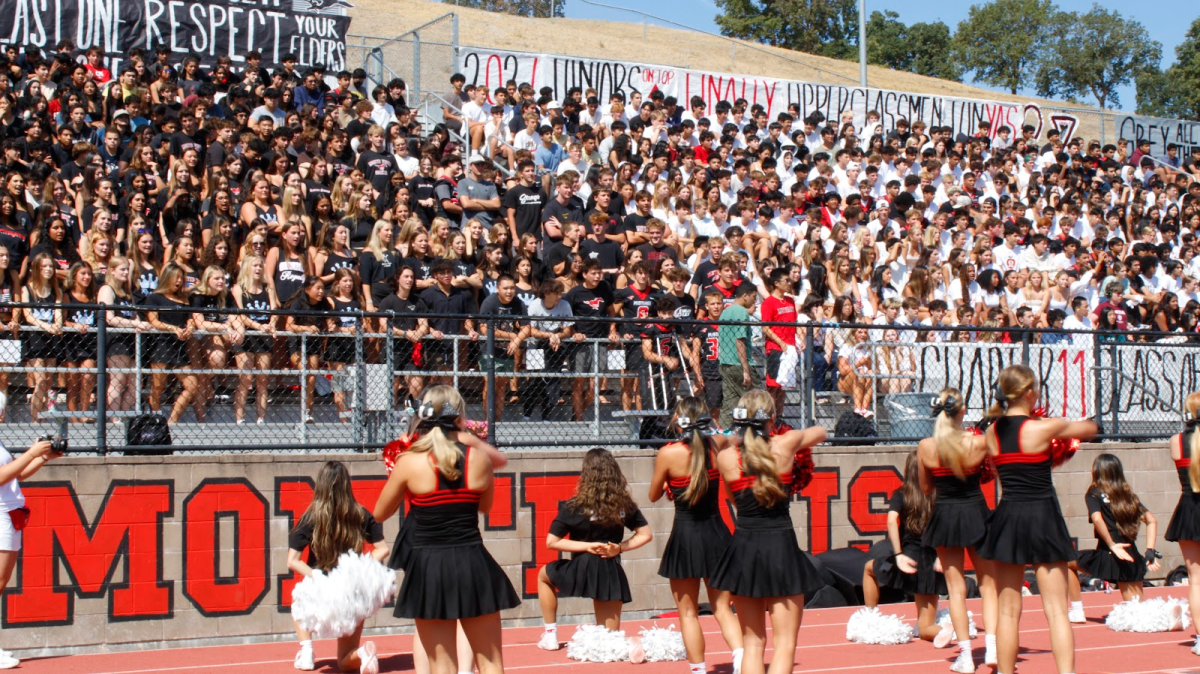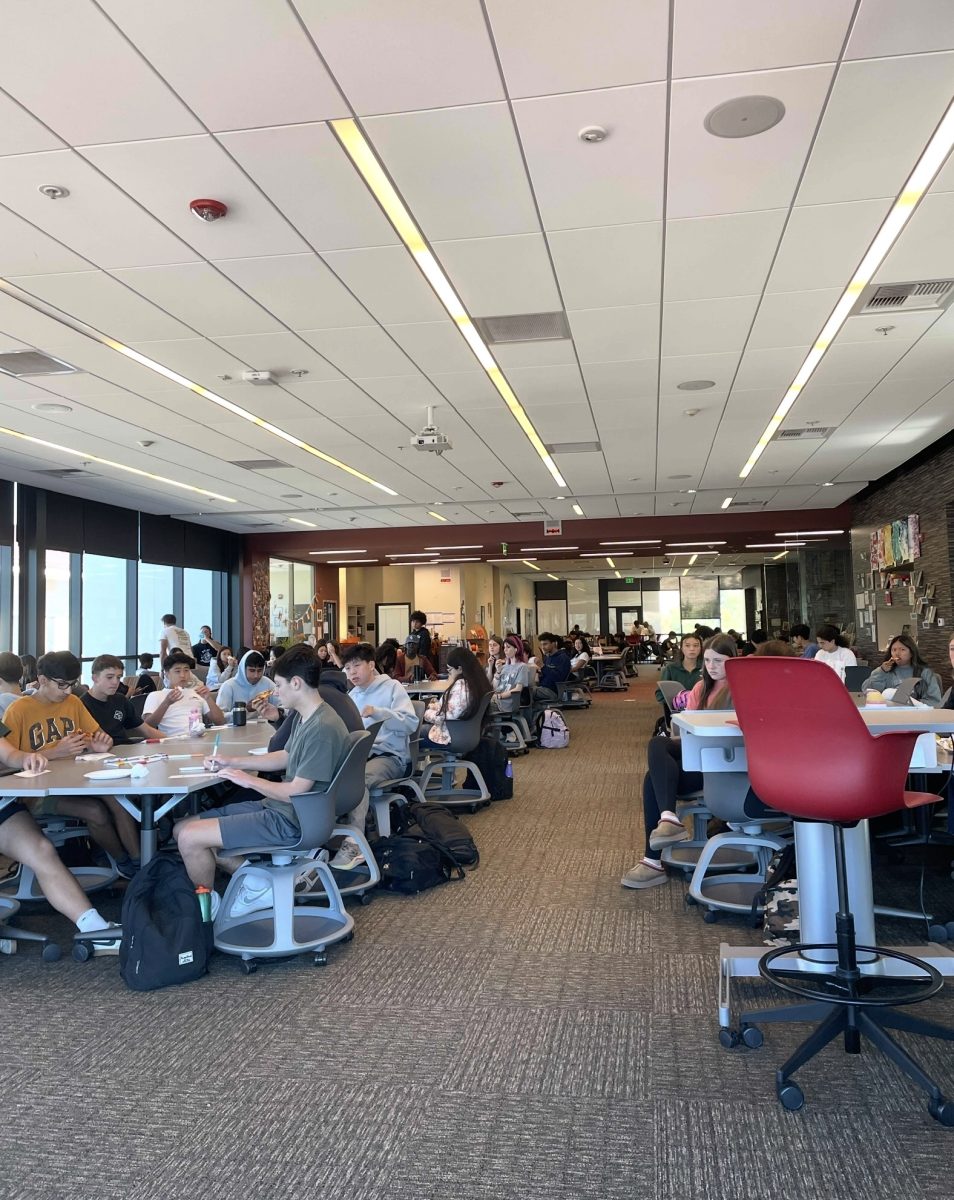Picture this: you’re an English teacher grading papers before the final bell of the day. As you sift through dozens of essays, you notice the same sentences through numerous papers but different writing styles. The overall vocabulary is much more sophisticated than usual and doesn’t match the rest of the paper. You put it into the plagiarism pile and move on to deal with it later.
This is a reality many teachers are facing due to the rise of artificial intelligence (AI). It’s quick, detailed responses have been a key player in plagiarism through student work. Software such as ChatGPT and AI Chat are being used less as learning tools and instead are being weaponized to cheat on assignments. With technology advancing at such a rapid rate, it’s becoming harder for teachers to restrict what platforms students are using outside of the classroom.
While it is convenient to get answers from these websites, that convenience comes with harsh consequences. The penalty for plagiarism at Monte Vista can result in a record on your disciplinary file.This can hurt students’ applications to universities and negatively impact them in the long run.
English teachers are actively trying to prevent cheating with new methods. Logan Spilker has his students come up with their thesis and write outlines during class on a collaborative document so that he can oversee if anyone copies and pastes. “A big thing that I do is I just make sure that I’m collecting and looking at every part of the process,” Spilker said.
AI is not a reliable source to get information from due to its bias. AI takes a general consensus on the topic, whether it’s correct or not, from the web and states it as fact. This means that anyone is able to influence AI’s opinion by posting on any platform despite their accuracy.
While teachers are scrambling to combat this uptick in student theft, students are grateful to have a resource to lighten their workload. With the piling stress of school and lack of time that comes with it, it’s no surprise that students would look for an easy solution. With this, they turn to overly advertised and straight-forward sources.
“I think people see it as an easy way to get things done,” said junior Jean Cunningham. “I can see how it would attract stressed-out kids if they thought it was an easy out.”
Despite the negative impacts, both teachers and students agree that there is a positive side to AI when used appropriately. Using AI can be a major resource to help students better understand course material. Junior Sophia Pederson uses it as a study tool.
“I ask ChatGPT to summarize or explain what a concept means and it’ll give me problems,” Pederson said. “And then I’ll answer those questions and keep practicing.”
AI becoming more prevalent in schools doesn’t need to be frowned upon if it’s managed correctly. While it is typically seen as technology taking over, it doesn’t necessarily have to be a negative. Both teachers and students agree that as long as it’s being used responsibly, it can serve as a helpful tool in schools world wide.










